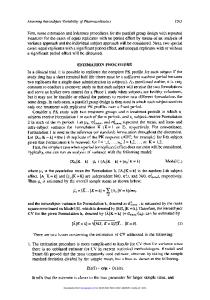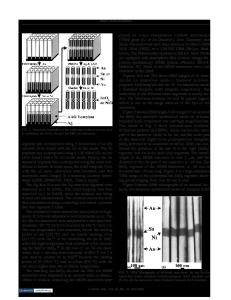In-Situ Studies of Semimagnetic Heterojunction Parameters
- PDF / 346,561 Bytes
- 6 Pages / 420.48 x 639 pts Page_size
- 9 Downloads / 328 Views
IN-SITU STUDIES OF SEMIMAGNETIC HETEROJUNCTION PARAMETERS XIAOHUA YU, N. TROULLIER, A. RAISANEN, G. HAUGSTAD, AND A. FRANCIOSI Dept. of Chemical Engineering and Materials Science, University of Minnesota, Minneapolis, MN 55455 ABSTRACT We have conducted a systematic study of Ge-Cdl-xMnxTe heterostructures prepared in situ by deposition of polycrystalline Ge onto atomically clean Cdl-xMnxTe (110) surfaces. We examined by means of high resolution synchrotron radiation photoemission the valence band offset AEv as a function of the substrate composition x (x=0, 0.35, and 0.60) and bandgap Eg (Eg=l. 4 7 , 1.93, and 2.13 eV). We find AEv=0.84±0.10eV in all cases, and no dependence of AEv on the substrate bandgap within experimental uncertainty. This finding indicates that within the range of validity of the transitivity rule, Cdl-xMnxTe-Cdl-yMnyTe heterojunctions may actually follow the common anion rule. INTRODUCTION Semimagnetic semiconductors are usually ternary alloys in which some of the cations in a II-VI semiconductor lattice have been replaced by magnetic atoms such as Mn or Fe. The resulting materials exhibit new magneto-optical and magnetotransport properties, such as giant Laudau splitting, giant electronic g-factor and large magnetoresistance[l,2]. Consequently, heterostructures formed by these materials would exhibit magnetically tunable superlattice optical and transport properties which could open the way to novel device applications[3].However little information is available about crucial heterojunction parameters of these materials, including the valence band offset AEv, which is one of the most important parameters for any device design[4]. In this paper we present a first synchrotron radiation photoemission study of the electronic properties of the semimagnetic semiconductor heterojunction Ge-Cdl-xMnxTe(ll0). We measured the valence band offsets AEv for different substrate compositions (x=0, 0.35, and 0.6) and bandgaps (Eg l. 4 7 , 1.93, and 2.13 eV) using both conventional methods and a new method which exploits spectra for Ge and Cdl-xMnxTe to generate a composite valence band edge, and a least squares fitting procedure to fit the experimental spectra for the Ge-Cdl-xMnxTe(ll0) interface to the composite valence band obtained a priori. The two procedures obtain remarkable consistent results only if a proper lineshape analysis of the Ge core level is performed as a function of coverage. Failure to do so yields incorrect estimates of band bending and therefore erroneous values of AEv from the conventional procedure. The new procedure is instead immune from these problems. The main conclusion of this work is that the valence band offsets are identical (0.84±0.10eV), within experimental uncertainty, for all
Mat. Res. Soc. Symp. Proc. Vol. 161. @1990 Materials Research SoCiety
460
of the heterojunctions examined, so that, if the transitivity rule applies to such systems, Cdl-xMnxTe-Cdl-yMnyTe will follow the common anion rule. EXPERIMENTAL DETAILS Single crystals of Cdl.xMnxTe alloys were grown at Pur
Data Loading...









